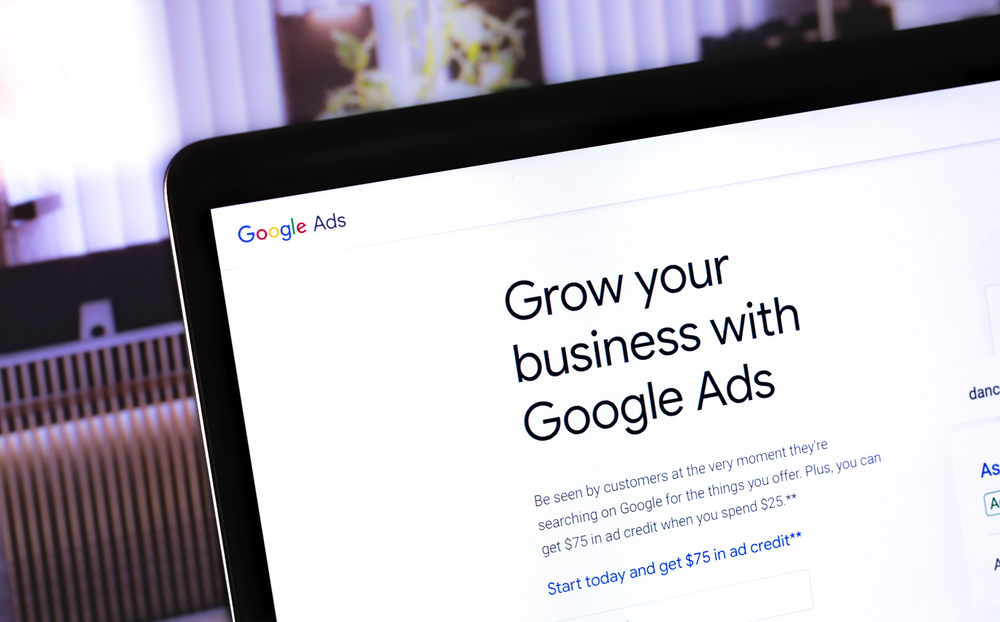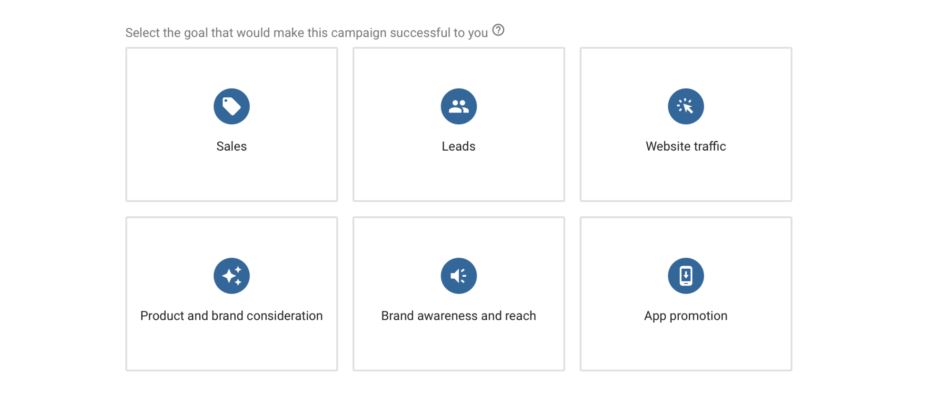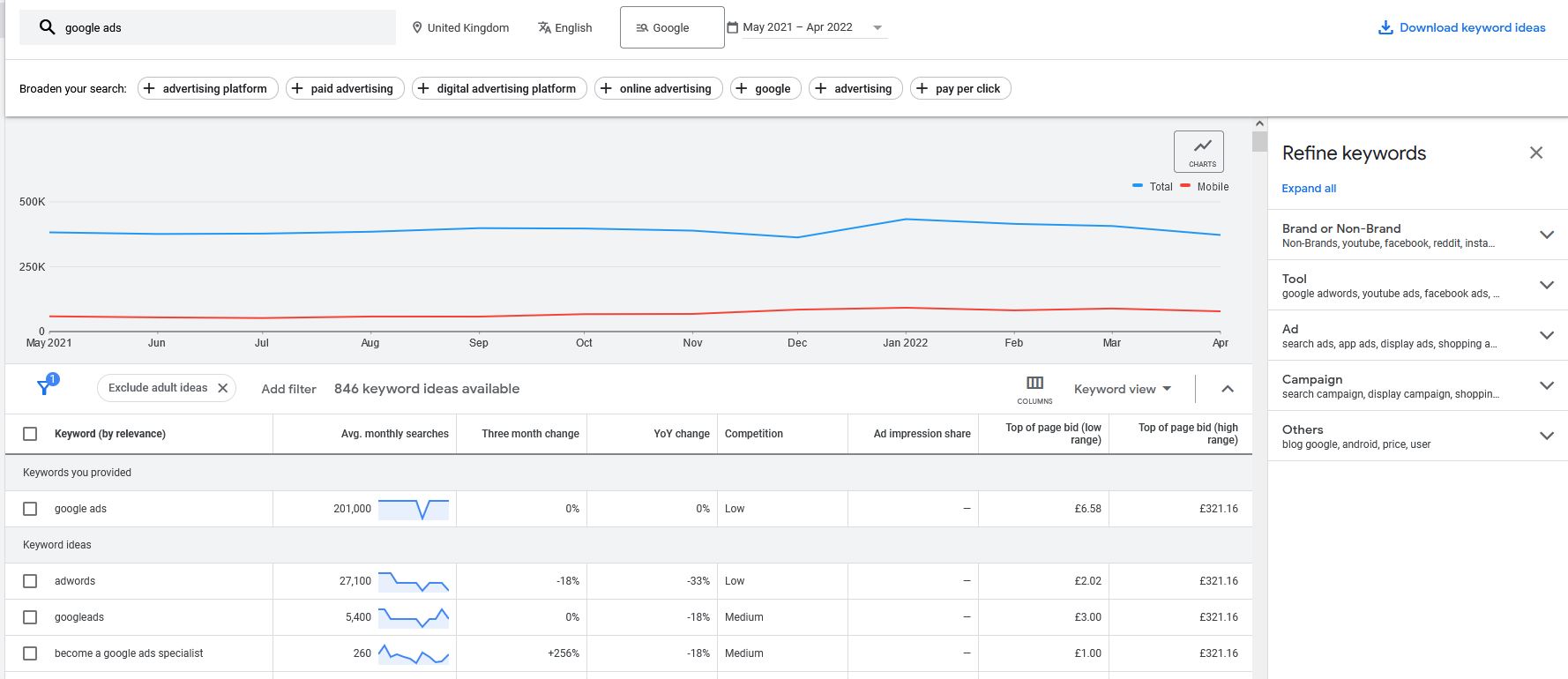Google Ads Bidding – How to Choose the Best Bidding Strategy
Google Ads Bidding – How to Choose the Best Bidding Strategy – If you’ve never used Google Ads before, setting up an effective bidding strategy can be more challenging than it appears. Your brand’s marketing efforts will be more successful and less expensive if you have a solid strategy to base them on.
This article will discuss the Google Ads bidding options and their characteristics to choose the one that best suits your business.
Get Your Goals Straight
Since each strategy performs differently, it is essential to determine the objective you wish to accomplish – clicks, impressions, conversions, or views.
Do you want customers to take immediate action on your website, or are you primarily concerned with generating traffic? Is it essential to raise brand awareness? These questions are crucial, as is the type of advertisements you wish to run; for instance, will they contain video content?
Driving More Conversions
A conversion can be anything you want it to be: increasing the number of newsletter subscribers, e-book downloads, or selling sneakers on your website. If the goal of your online advertising is to increase conversions, it makes little sense to launch campaigns without conversion tracking in place.
Driving More Traffic to Your Website
You might have multiple goals on your website, so driving more traffic is something you can do and optimise within Google Ads to get the best possible quality for the lowest possible price.
Brand Awareness
So, you are soon launching a local event that you want everyone to know about? Google will be your best friend if you have a substantial budget by letting everybody know.
What is Manual Bidding?
Using manual bidding allows you to tailor your ad targeting to your business’s specific needs. It will enable you to set bids at the ad group level or for particular keywords or ad placements to be sure to spend the most money for the clicks that are most important to you.
What is Automated Bidding?
Automated bidding eliminates the guesswork and manual labour typically associated with setting bids to achieve your performance goals. Your bids are automatically adjusted based on machine learning algorithms that you supply to Google as direction on how you want your project to turn out.
Additionally, a subset of “smart bidding” campaigns geared toward converting visitors into leads or customers within automated bidding. These campaign types use Google machine learning to optimise for conversions or revenue in each ad auction – a technique commonly known as “auction time bidding.” So, smart bidding campaigns can take signals that traditional manual bid adjustments would otherwise overlook.
Each type of automated bid strategy described below is intended to assist you in achieving a particular business objective. Making sure that the type of campaign you select aligns with your company’s long-term goals is critical.
Benefits of Automated Bidding
- It is the quickest and easiest method for estimating costs.
- Google works to maximise the number of clicks you get for the money you spend on your campaigns.
- Automatically target the optimal bids for your campaign objective.
- Reduces the amount of time spent on campaign management.
- Automate bids while retaining control of spending with an optional maximum CPC.
Automated Bidding Tips
- Manual bidding should precede automated bidding. The automated bidding algorithm takes time and conversions to make accurate forecasts.
- Implement Conversion Tracking. Track your ad clicks to goals like sales, sign-ups for a newsletter, or leads generated by your ad. Conversion tracking must be enabled before using automated bidding.
- Aim to limit the number of times you make changes to your campaign while the algorithm learns how best to achieve your objectives. Changes in your ad strategy necessitate a shift in Google’s algorithm. This includes CPA goals, ads, and daily campaign budgets.
- Perform performance evaluations and make adjustments as necessary. Examine the bid strategy report to determine how effectively each bidding strategy performed. Based on this information, refine your bid strategies to increase your campaigns’ performance.
Types of Bidding Strategies
There are three fundamental bidding strategies for Google Ads:
- Results Focused Strategies
- CPC Bidding Strategies
- Visibility Focused Strategies
Each contributes to the success of your campaigns in a slightly different way. Let’s examine what these strategies involve. We’ve organised them into distinct categories to help you understand each one’s primary objective.
When to Use Google’s Smart Bidding Strategies
You should implement one of Google’s Smart Bidding strategies for conversion-oriented campaigns. If your Google Ads account is brand-new, you may not be able to use Smart Bidding immediately, as Google must first learn about your brand, ads, and audience. You will be able to use these bid strategies once your campaign has generated 15 conversions within 30 days.
Some of these methods may be more effective than others depending on your financial situation.
Target CPA
Target CPA (cost per acquisition) strategies increase conversions while aiming for a specific price. This entails minimising expenses while concentrating on continuously boosting conversion rates. This acquisition-focused strategy can help you stay within your budget and track your expenditures more quickly because of its emphasis on the total cost of each acquisition.
With the help of a target CPA, you can get the maximum number of sales at your target cost per acquisition (CPA). Unlike maximising conversions, Target CPA doesn’t work within a predetermined budget.
You can use this bidding strategy when you know exactly how much you’re willing to pay for a lead or conversion. The goal is to keep the cost per conversion as low as possible while simultaneously increasing the number of conversions.
Target ROAS
Target ROAS (return on ad spend) entails having your bids optimised at the time of the action to approach each auction differently. Depending on your needs, you can use it for single or multiple campaigns. It can easily handle both situations. It’s all about getting the most out of your bidding investment.
Target ROAS bid more where the Google Ads algorithm estimates that ads are more likely to result in a sale, maximising return on investment (ROI). This approach works well when an advertiser knows how much each conversion is worth.
Maximise Conversions
This may be the simplest strategy available. You only need to set your maximum daily budget, which Google will use to automatically manage your bidding, resulting in your investment’s most significant number of conversions. After the campaign, examine the return on investments to determine whether the maximisation of conversions resulted in profitable sales.
When using this feature, bids are automatically placed at auction time to maximise volume conversions while staying within a campaign’s budget constraints. This bidding strategy works well when a fixed advertising budget is available and a conversion price has not yet been determined for a given ad group (a target CPA).
Enhanced Cost Per Click (ECPC)
This bidding strategy is commonly employed in conjunction with manual CPC bidding. Enhanced cost-per-click bidding involves automatically adjusting your manual bids to maximise conversions. Bids are adjusted based on the likelihood that ads will receive clicks that result in sales or conversions on your website. It is an excellent complement to any manual strategy you may be employing.
ECPC is a semi-automated bid strategy that adjusts your bids to achieve as many conversions as possible within the budget constraints. This strategy is a compromise between automated and manual bidding. With this technique, you can increase conversions while maintaining control over your keyword bidding.
When to Use Cost-Per-Click Strategies
One of the two CPC strategies listed below is most likely ideal for your business if all you want to do is drive clicks from your search ads. Your team members will need to keep a close eye on manual CPC bids to keep them competitive without spending too much money and thus reducing their budget’s effectiveness.
Maximise Clicks
Your daily budget maximum determines this automated strategy. Google’s goal is to get as many clicks on your webpage as possible with the daily budget you set. This could be a viable option if your finances are tight.
Maximise clicks will automatically set your bids to obtain the maximum number of clicks possible within your budget. The advantages include receiving more clicks for less money and more traffic from low-volume search terms.
Advertisers who are just getting started with online marketing and are most concerned with driving traffic to their website can benefit greatly from this bid strategy.
Manual CPC Bidding
Manual CPC bidding is the way to go if you want to control the bidding process directly. It’s possible, as previously mentioned, to combine this approach with an ECPC one. With this strategy, you can set your bids for different ad groups, keywords, and placements. If you find certain placements more lucrative than others, your money can be moved around.
When to Use Impression-Focused Strategies
There are four distinct bid strategies you can employ to increase brand awareness. Aside from CPM, which is the most common model, other options may better suit your company’s needs.
Target Search Page Location
This is yet another automated bidding strategy, but this one emphasises the location of your ads. It entails ensuring that your money is spent on bids that increase the likelihood of your ads appearing at the top of pages and on the first page of search results. Simply put, it’s about ensuring that your advertisements are seen if that’s your top priority.
Target Outranking Share
Target outranking share is another automated bidding technique. Using this method, you can target and outrank a specific domain, giving you an advantage over the competition. It’s an effective tactic for those seeking to outpace a rival site’s popularity and reach.
Cost-Per-Thousand Impressions
If you opt for this strategy, you will only be charged for the number of impressions you receive. That can be found on Google or YouTube. Consequently, you will be charged each time your advertisements receive 1,000 impressions. You will not be charged for these impressions if they do not reach the next milestone of 1,000 impressions.
Cost-Per-Thousand Viewable Impressions
Similarly, cost-per-thousand viewable impressions entail paying for impressions, but it’s viewable this time. This is a great way to raise awareness about your brand without relying on people clicking on your ads. Regardless of whether your ads are clicked on, you will be charged once they have been viewed 1,000 times. This strategy, like the preceding one, is also manual.
Always take into account the specific requirements of your campaign. The strategy you select will depend on the type of campaign you wish to conduct and the networks you want to target.
Factors to Consider for Your Bidding Strategy
Budget
Budget plays a significant role in most of these strategies, so you first need to establish your advertising budget. Choosing target outranking share as your bid strategy, for example, is probably not a good idea if your budget is limited. It’s always a good idea to start small and work your way up as you gain experience with digital advertising and develop a better understanding of how your ads perform.
Campaign Objectives
What are your campaign’s objectives? You could prioritise increasing impressions, clicks, and conversions. With Google Ads, you can select a bidding strategy geared toward each of the following:
- Brand awareness – A strategy centred on impressions may be a good starting point for raising awareness. Cost-per-thousand viewable impressions (vCPM) and cost-per-view (CPV) bidding can be used to place your advertisement in front of potential customers.
- Increase web users – Focusing on clicks could be useful for boosting website traffic. Using CPC bidding may benefit your advertising campaign, either manually or automatically.
- Maximise Profits – Conversion tracking and a laser-like focus on sales may be the best strategy for your campaign. Cost-per-acquisition (CPA) bidding allows you to do precisely that.
Tools for Determining Bid
It would be best to use manual CPC bidding when you start Google Ads until you have a good handle on the system’s performance.
- Bid Simulator – Gives an idea of how many more clicks or impressions you can expect to get by predicting “what-if” scenarios.
- Keyword Planner – Displays the volume of keyword searches alongside estimated costs.
- First-page bid estimates – Indicate the required bid increase for the keyword for the ad to appear on the first page of search results.
Bidding Strategy Tips – Monitor Performance
The following are a few ways to check how well ECPC is working for your campaign:
- Wait at least 15 days after switching bidding strategies before evaluating their performance. This time provides the strategy with the opportunity to adapt.
- Time alone won’t suffice; you’ll also need to collect sufficient data to assess the strategy’s effectiveness. If your site receives little traffic, you might want to consider reviewing your data weekly rather than daily.
- Over time, certain variables may influence your results. Your results may be impacted by holidays, weekends, special events, modifications to your feed and other auction participants.
- Check the number of conversions, the conversion rate, and the cost per conversion to determine if you are efficiently increasing conversions. The greater the number of conversions you have, the greater your ability to detect an increase in conversion rate.
- CPA, ROAS, or Enhanced CPA may increase the cost per click or decrease the number of clicks, but this is expected because ECPC lowers bids for clicks with low expected conversions.
- Foresee possible conversion delays. Some conversions take longer than others, sometimes taking days or even weeks to complete.
Why Do Bidding Strategies Matter?
Your bidding strategy directly influences your Google Ads campaigns’ final results and return on investment. Selecting the right one is essential. Some will help you receive more clicks, while others focus on impressions or converters. Your specific objectives and financial constraints will determine the right one for you.
Let the Bidding Begin
Choosing your bid strategy is critical when launching a Google Ads paid search campaign, as it sets the tone for your campaign’s overall success. Pay per click is no longer the best option for all campaigns, as marketers should strive to align campaign performance as closely as possible with the overall business objective.
Google’s smart bidding technology can help alleviate some of the burdens of managing extremely granular keywords and, in some cases, can improve performance. No automated bid strategy is a magic bullet, so be sure to do your research, test whenever possible and keep an eye on overall KPI performance
Need help with your Google Ads strategy?
If you’re not getting the results you expect from your Google Ads strategy or can’t achieve profitable ROAS, speak to our PPC team by calling 0121 231 015 or fill in a form on the website requesting a free consultation.







